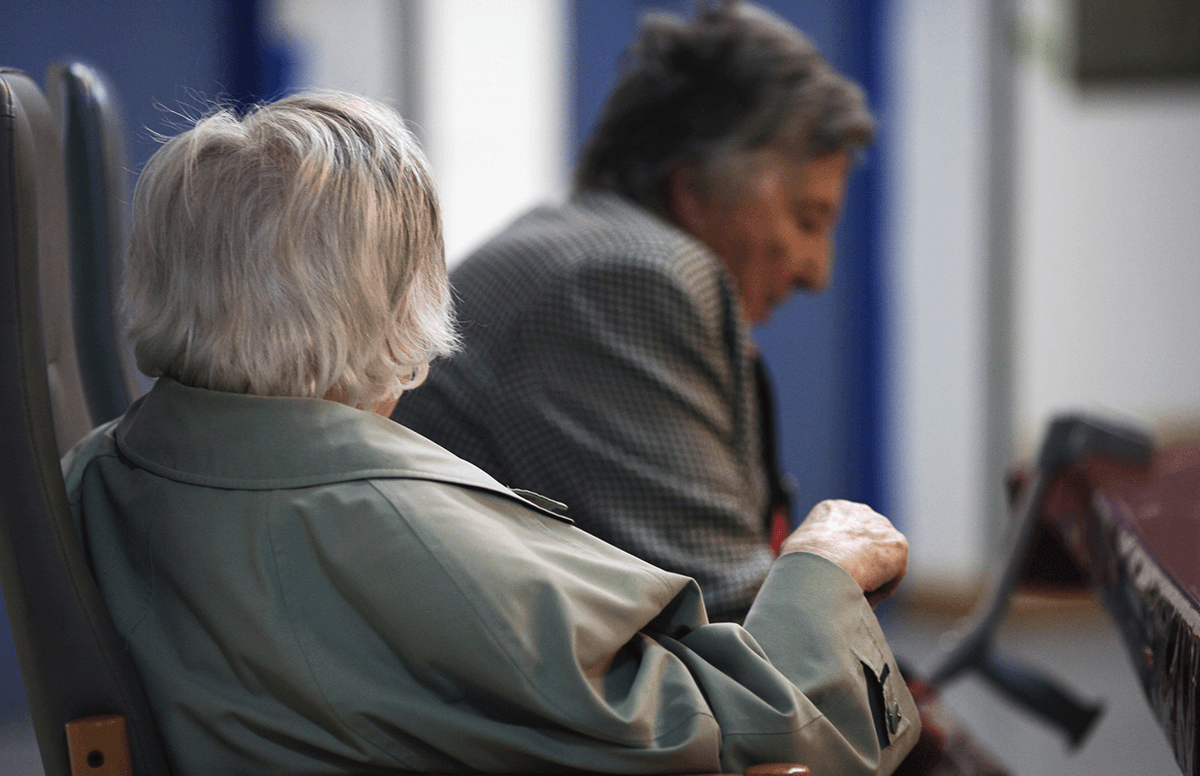OPINION: Why It's Time for More Big Foundations to Fund Aging
The stunningly low amount given to help older adults in need
It’s an issue we can’t ignore: The fastest-growing age group in our population needs our help, and we’re failing them miserably.

For the first time in the history of the developed world, there are more of us over age 60 than under age 5. Women who reached age 65 in 2016 can expect to live to nearly 86, and men to 83. About 17% of the U.S. population is over 65 today and, in 10 years, that number will increase to nearly 21%. While these remarkable stats tell us that we’re living longer, they don’t necessarily mean we’re living better.
More than 25 million Americans aged 60+ are economically insecure and, according to a Schwartz Center for Economic Policy Analysis study, 40% of today’s older middle-class workers will live at, or near, poverty in retirement. They struggle with rising housing costs and health care bills, inadequate nutrition, lack of access to transportation, diminished savings and limited opportunities for work. And, according to new poverty figures released by the U.S. Census Bureau this week, 5.1 million Americans age 65 and older are living in poverty; the poverty rate for people 65 and older was 9.7% in 2018, up from 9.6% in 2017.
When it comes to the most significant grants given by America's largest foundations, less than 1% of the funds go to causes related to aging.
Why So Little Philanthropy Money Aids Older People in Need
Growing numbers of older adults need our help now, yet we continue to set aside fewer and fewer dollars to come to their aid. According to Candid (a leading source of information on philanthropy), when it comes to the most significant grants given by America’s largest foundations, less than 1% of the funds go to causes related to aging. Less than 1%.
Some suggest this is happening because far too many view older Americans as a burden, while they see children as an investment. Also, there’s a pervasive attitude that many older adults are responsible for the position they’re in simply because they didn’t save enough or work hard enough in their younger years. Whether you agree with those rationales or not, this crisis calls for our collective compassion.
For far too long, we’ve been conditioned to believe that government takes care of our elders. Unfortunately, in most cases, that’s just not true. And far too many of us aren’t aware of the unprecedented demographic shift that has taken place. For these reasons, we need to direct more of our attention — and more dollars — to our aging population.
Why It's Time for a Change
We must change. We must change for those older adults who are struggling today and those who will be struggling tomorrow. We must change, because living longer should not mean dying without a dollar.
The lives of older adults are worth much more than 1%. Just imagine if foundations could increase that number to 2%, 3% or even 4%.
As founder and chairman of Home Instead Senior Care, I believe we can’t ignore this great need. That’s why my company and I are sounding the alarm.
As we mark the 25 year of Home Instead Senior Care, we are striving to raise $2.5 million for senior causes funded through the Home Instead Senior Care Foundation. (My wife Lori and I kicked it off with a personal $500,000 donation, and we will match an additional $1million that we hope will be given by others.) You can make a donation by visiting www.Give65.org/25years.
For Housing, Transportation and Health
If we started directing more funding to such causes, more people would be able to realize their goal of aging in place. According to Grantmakers in Aging, older adults are more likely than their younger counterparts to spend more than 30% of their income on their home; it’s a month-to-month struggle for many. Having a roof over your head isn’t something you should have to worry about as you age, and increased aid would help alleviate those concerns.
As we age, we also have a greater need, and fewer options, for transportation. Additional funding could help provide better options for older adults who don’t drive or have limited driving capabilities. An AARP survey found that 22% of older drivers and 61% of older people who didn’t drive reported they missed something they wanted to do because of their transportation limitations. Things most of us take for granted — like doctor’s appointments and visits with family and friends — should not suffer for lack of a ride.
Increased donations to aging-focused causes would also help combat elder abuse and illnesses. More funds would mean more resources to help prevent serious issues like social isolation, too. And increased aid would help more older adults enjoy more life experiences — like enjoying nutritious meals with their community or fostering friendships at senior centers.
Beyond donating dollars, it’s important for everyone to be inspired to care. To do that, give of yourself, and spend time with an older person. In the process of sharing your caring, you can help prepare for your own future as an older adult.

